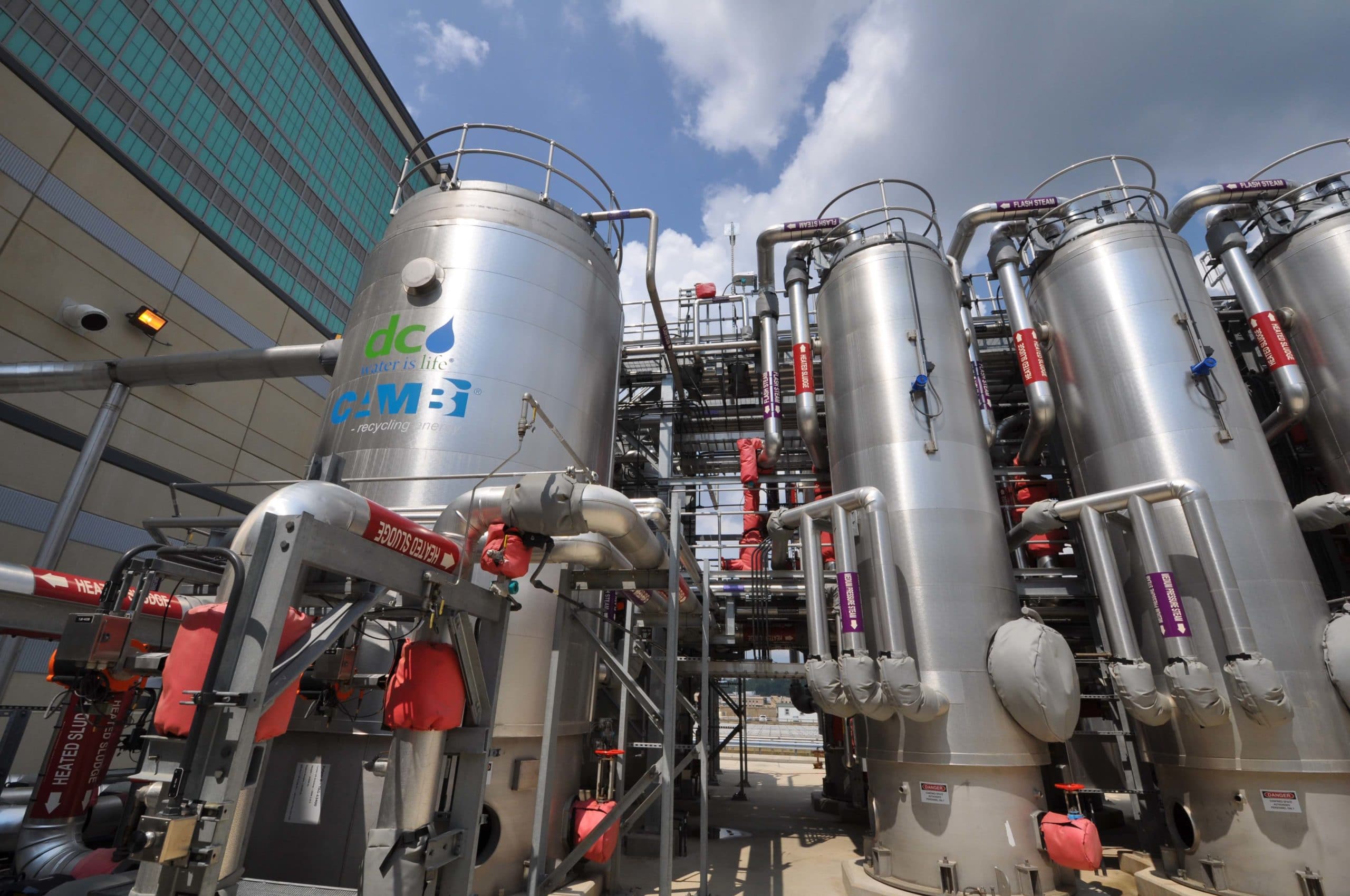In October of 2015, Washington D.C.-area based utility DC Water unveiled a new, environmentally friendly waste-to-energy project. The upgraded facility generates a net 10 megawatts (MW) of power, produces a cleaner byproduct, and greatly lessens the utility’s carbon footprint. This innovative solution to the global goal to turn wastewater into clean drinking water represents not only a major step forward for the residents DC Water serves. It also shows the risk-averse utilities across the US that investing in the future can make both fiscal and environmental sense. If one wants proof, they need only tour DC Water’s facilities and see for themselves how foresight (and a bit of boldness) helped a major utility complete what DC Water CEO George Hawkins calls “a rare public project that makes both economic and environmental sense.”
Keeping fresh, healthy water flowing in a major metropolitan area like Washington D.C. is a massive undertaking. DC Water buys treated drinking water from the US Army Corps of Engineers Washington Aqueduct and then distributes it across the district. To accomplish this, the company operates “more than 1,350 miles of pipes, four pumping stations, five reservoirs, four elevated water storage tanks, 1,800 miles of sanitary and combined sewers, 22 flow-metering stations, and nine off-site wastewater pumping stations.”

DC Water CEO and General Manager George S. Hawkins.
In the mid-2000’s, DC Water’s infrastructure was in need of a $100 million upgrade to maintain operational levels, and the company’s board of directors used this as an opportunity to explore possibilities for improvement. DC Water operates a robust research division, staffed by scientists, engineers, and graduate students conducting applied research. A team from DC Water’s research department, led by Chris Peot, director of resource recovery, identified areas in need of an update in DC Water’s biosolids or wastewater operations and sought new, innovative solutions.
One of the largest problems facing any wastewater treatment facility is what to do with the solid matter left over after the treatment process. DC Water’s previous system produced nearly 1,200 tons of Class B biosolids each day. Class B waste can be used as fertilizer, but only in specific, EPA-mandated environments, including certain farms and commercial landscaping environments. DC Water was responsible for identifying customers who could use the Class B material, transporting the fertilizer to the sites. Between the costs of shipping the waste—up to 60 truckloads each day, biosolid management was a site ripe for system improvement.
So, Peot’s research team examined wastewater treatment facilities and processes around the globe, looking for a good fit for DC Water’s needs. During their research, the team encountered CAMBI thermal hydrolysis, a process that uses high temperature and pressure to break down cellular walls, which facilitates the next step of treatment—anaerobic digestion. This process was being used in Europe, but not in any American facilities. After initial interest, the DC Water team performed nearly 40 peer-reviewed research papers, exploring the process’s feasibility, benefits, and potential downsides before making an investment. Without a model to follow stateside, the DC Water team was taking a risk, but felt enthusiastic about their potential to serve as an example of how progressive, innovative processes can work for utilities here at home.
With high expectations, the utilities company broke ground on their new waste-to-energy facility in 2011. In the first year since its launch in late 2014, the utility is already seeing significant benefits. The methane gas produced during anaerobic digestion is being used to produce up to a third of the plant’s electricity needs. The steam produced is fed back into the process. And because the CAMBI thermal hydrolysis produces roughly half of the solid materials, DC Water saved money in the initial investment by building only half of the digesters previously needed. Additionally, the material produced is a super clean Class A compost-like material that can be used nearly anywhere. DC Water is currently working to develop it into a marketable compost product that can further defray costs and support community projects.

The unveiling of the plaque for the Bailey Bioenergy Facilities, with Walt Bailey, now retired.

District of Columbia Mayor Muriel Bowser speaks at the commissioning ceremony October 7, 2015.
“There is no waste, only wasted assets,” contends CEO George Hawkins. While still a long way from the ultimate goal of being energy neutral, Hawkins is rightfully proud of the example set by DC Water. Today they are host to tours from teams from places as far off as San Francisco and Honolulu, and their research team will help those communities potentially develop their own CAMBI thermal hydrolysis projects. “We are most proud of the benefits we have delivered to the public. We have shown that a government agency can be innovative while serving the needs of ratepayers.”

